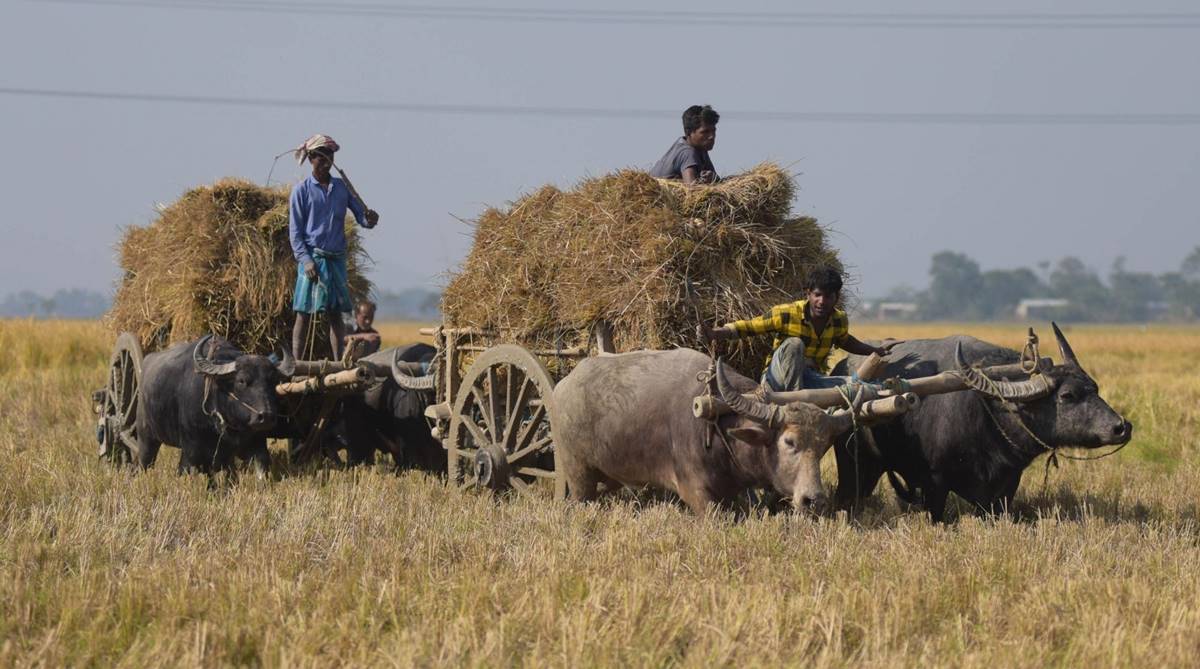From Mandsaur to Mumbai to more recently in Delhi, farmer agitations have repeatedly knocked on the doors of the government, pressing their demands including waiving of loans. These protests, silent marches, farmers spilling milk and dumping onions on roads cannot be sidelined as “political drama” anymore. It might be projected as a mob but it’s most definitely a movement, a movement asking the government to take notice of the agrarian crisis that the nation is reeling under.
Owing to the plight and demands of the farmers, states such as Uttar Pradesh, Maharashtra, Rajasthan, Punjab, and most recently Madhya Pradesh have rolled out their versions of farm loan waivers.
Advertisement
Seven states since 2014 have rolled out loan waiver schemes, summing up to around Rs 182,802 crore. And as per agricultural economists, the amount is projected to multiply manifold by 2019. Although credit to the farm sector has been increasing, loan waivers are a temporary solution to a wider problem that has been faltering the nation’s agrarian sector. To understand why the farm loan waivers are not a permanent solution, it is imperative to grasp the magnitude of today’s agricultural state in India.
READ | West Bengal government to fund 100% crop insurance for farmers
The agriculture sector in India is suffering from instability in incomes, lack of irrigation, high risks involved in production, market and prices, and the climatic changes.
Owing to these factors that lead to bad produce or lesser profit, the majority of the farmers end up taking loans from formal or informal sources or both either for agricultural purpose or to make their ends meet. The subsequent aim of loan waivers is to lessen the debt burden of the farmers. However, loan waivers only cover a small fraction of the farmers, only those who borrowed from formal sources. Also, these loan waiver schemes don’t count the farmers who invested from their savings. Such farmers are also equally vulnerable to weather and market risks.
In order to prevent the farmers from the grim situation, there is a dire need for an overhaul of the farming sector towards sustainable solutions through the benefits of technology, trade and training on advanced agricultural practices. Prof. MS Swaminathan proposed the implementation of the Minimum Support Price (MSP). He advocated that farmers be given an MSP that is 1.5 times the production cost. However, the concept of MSP is contested for not being economically viable.
One of the renowned agricultural economists rightly argues that more than 80 per cent of farmers in India who have borrowed loans are small and marginal. They make distress sale during the harvest for they have to repay their loans. Also, they are also the consumers of their own produce. Despite an MSP, what their earned profit is meagre and they remain ill-equipped to support themselves. Hence, farmers cannot be categorized in one group for MSP to solve the issue. One shoe cannot fit all. MSP is definitely a great idea but farmers need to be treated individually and not collectively. The policymakers must look at a formula that makes farmers’ income stable and secure and strikes the right balance between production costs and profits earned.
Production costs can be reduced by introducing subsidized agricultural inputs and agricultural equipment. The tools will be of no help if you lack in knowledge. There is a dire need for sensitizing and training the farmers across the nation about the kind of crops they should grow as per the climate, illeffects of climate change and practise intra-crop adaptation. Increased knowledge and training would result in better implementation, and yield better results.
Agriculture in India is highly dependent on monsoon. Farmers face losses particularly in a year with no rainfall. Hence, rather than spending on loan waiver, the government can invest in better forms of irrigation. A better irrigation investment will protect the crops from both excessive heat and drought.
Increased adoption of Kisan mandis and e-mandis at district levels will remove the middlemen, whose existence cause farmers to face major problems. The long chain of middlemen has become the monopoly buyers of agricultural produce. This enables them to take advantage of rising prices, the spurt in demand etc. They do not pass on the benefits to the farmers. By eliminating middlemen and increasing access to these mandis, the farmers can get a better deal based on the demand on their crops. They can directly sell to wholesale and retail consumers. There is no denying that the loan waiver is the need of the hour, but it’s a temporary arrangement, a shortterm relief. Following the first spell of loan waivers in 2008, there is no evidence that it has helped in reduction of agrarian distress.
The concept of “Evergreen Revolution”, proposed by M S Swaminathan, rightly constitutes a healthy amalgamation of integrated pest control, nutrient supply, training for farmers, and scientific water management. In the longer run, the focus should be on strengthening the repayment capacity of the farmers by improving their income.
Structural reforms in Indian agriculture, where the farmer is empowered, is the need of the hour. It’s imperative that we quell the vicious cycle of loans and make our agriculture sustainable.
(The writer is Founder and CEO, Fiinovation)









